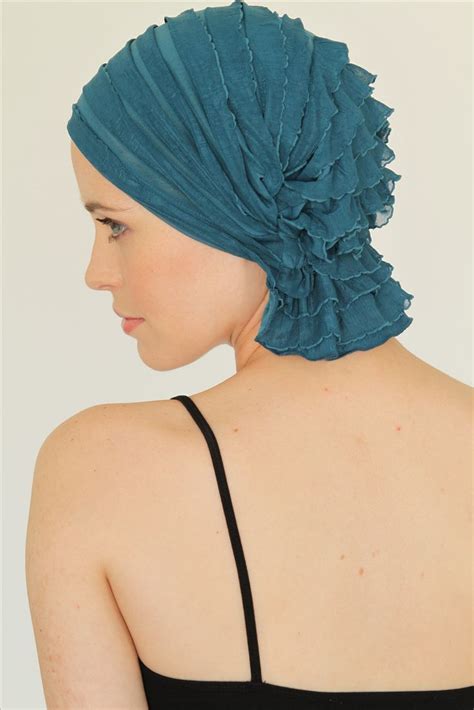Understanding the Challenges of Hair Loss in Cancer Patients
According to the American Cancer Society, hair loss is a common side effect of many cancer treatments, including chemotherapy and radiation therapy. This can be a significant source of distress for patients, affecting their self-esteem and quality of life.

Head Covers as a Solution: Comfort and Confidence
Head covers provide a comfortable and stylish way for cancer patients to manage hair loss. They can help restore a sense of normalcy, protect the scalp from the elements, and reduce the emotional impact of treatment-related changes.
Exploring 12 Popular Head Cover Options
1. Bandanas: Versatile, easy to style, and available in various patterns and colors.
2. Beanies: Warm and cozy, perfect for cold weather or outdoor activities.
3. Caps: Sporty and functional, ideal for those on the go.
4. Chemo Caps: Specifically designed for cancer patients, made from soft, breathable materials.
5. Headbands: Comfortable and supportive, ideal for holding back sweat or hair regrowth.
6. Headscarves: Elegant and versatile, allowing for creative tying styles.
7. Snoods: Stretchy, tube-like covers that can be worn in multiple ways.
8. Turbans: Sophisticated and stylish, available in various fabrics and designs.
9. Wigs: A semi-permanent solution that mimics the look of natural hair.
10. Hair Prostheses: Custom-made hairpieces that are attached to the scalp.
11. Scalp Cooling Systems: Devices that help reduce hair loss during chemotherapy.
12. Laser Caps: Non-invasive devices that stimulate hair growth and reduce hair loss.
Choosing the Right Head Cover: Considerations
1. Comfort: Choose materials that are soft, breathable, and gentle on the scalp.
2. Style: Select a cover that matches your personal style and aesthetic preferences.
3. Functionality: Consider the activities you engage in and choose a cover that provides adequate protection and support.
4. Medical Needs: If you have any scalp conditions or sensitivities, consult with your healthcare provider for specific recommendations.
Benefits of Head Covers for Cancer Patients
1. Comfort and Protection: Head covers shield the scalp from the elements, reduce friction, and provide support.
2. Emotional Well-being: Restoring a sense of normalcy and self-confidence during treatment.
3. Privacy and Control: Head covers allow patients to manage their hair loss discreetly and on their own terms.
4. Health Benefits: Scalp cooling systems and laser caps can potentially reduce or prevent hair loss.
Creative Applications for Head Covers
1. Personalized Accessories: Decorate head covers with ribbons, bows, or other embellishments to create one-of-a-kind pieces.
2. Artistic Expression: Use head covers as a canvas for painting, embroidery, or other artistic creations.
3. Fundraising and Advocacy: Design head covers with inspirational messages or organizational logos to raise awareness and support cancer research.
Step-by-Step Guide to Choosing the Right Head Cover
1. Research and Explore: Gather information on various head cover options from online resources, healthcare professionals, or support groups.
2. Personal Assessment: Consider your comfort level, style preferences, and medical needs.
3. Trial and Error: Try on different head covers and observe how they feel and look on you.
4. Professional Guidance: Consult with a healthcare provider or stylist for personalized advice and recommendations.
Pros and Cons of Different Head Cover Types
| Head Cover Type | Pros | Cons |
|---|---|---|
| Bandanas | Versatile, affordable, easy to style | May not provide full coverage |
| Beanies | Warm, cozy, comfortable | Can be bulky |
| Caps | Sporty, functional, protective | May not be suitable for all occasions |
| Chemo Caps | Soft, breathable, designed for cancer patients | Limited style options |
| Headbands | Comfortable, supportive | May not provide full coverage |
| Headscarves | Elegant, versatile, stylish | Can be challenging to tie |
| Snoods | Stretchy, versatile, comfortable | May not provide adequate support |
| Turbans | Sophisticated, stylish, secure | Can be expensive |
| Wigs | Semi-permanent, mimics natural hair | High maintenance, can be uncomfortable |
| Hair Prostheses | Custom-made, natural-looking | Expensive, requires professional maintenance |
| Scalp Cooling Systems | Reduces hair loss | Can be uncomfortable, may not be effective for all patients |
| Laser Caps | Stimulates hair growth | Requires regular use, may not be suitable for all patients |
Conclusion
Head covers provide a multifaceted solution for cancer patients experiencing hair loss. They offer comfort, style, and emotional support while enhancing the overall well-being during treatment. By embracing the variety of options available, patients can find the perfect head cover that meets their individual needs and empowers them to face the challenges of cancer with confidence and resilience.
